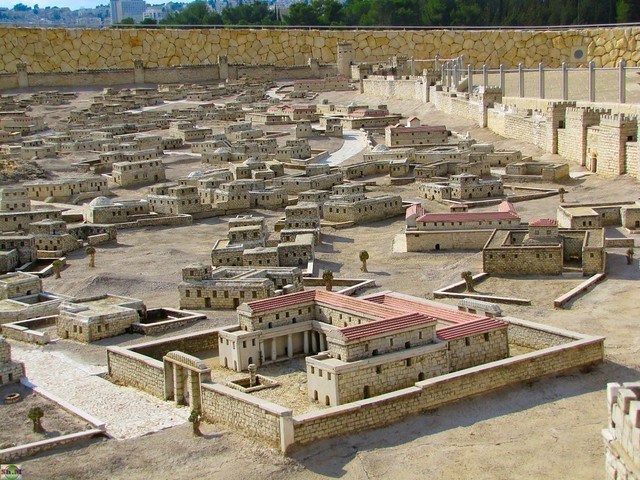
Two similar languages share the stage as one of the oldest languages ever spoken. Enjoying the spotlight throughout ancient history, these languages have become invaluable to anyone who understands their importance. However, many misperceptions have sprung up along the way, hence the importance of knowing the difference between Aramaic and Hebrew.
Clarifications in all areas between the two languages equips one with apt knowledge. Along the way, readers and enthusiasts alike discover a whole world of untold truths.
History of the Aramaic Language
Aramaic is a group of languages or dialects of Semitic origin. It was spoken throughout the Assyrian and Babylonian Empires. Originating from the ancient Middle East, people known as Arameans first spoke the language towards the ending of the 11th century BCE. After a few decades, it became widely accepted by the Assyrians as a second language. Its history is broken down into three major periods:
[If you want not only to learn about the history of the Aramaic language, but also study this language, read here my article on how you can study Aramaic language online.]
· Old Aramaic: This lasted from 1100 BC- 200 AD. It was the language in Damascus, Hamath, and Arpad. From the 7th century, the language spread like wildfire after the Assyrians deported a massive number of people. Secondly, its use as a main language by Babylonian merchants only served as fuel to fan the flames of the language across the empires. This meant that by 6th century BCE, it had already replaced Akkadian as the official language of the Middle East and replaced Hebrew as the language of the Jews. For the next two centuries, it was the lingua franca of the Achaemenian-Persian dynasty until Alexander the Great ended the reign.
· Middle Aramaic: A few Aramaic dialects in Palestine and Syria made it into the Roman era. It consequently divided into eastern and western variations. This continued until Arabic around 650 CE, replaced it.This period lasted until 1200 AD. It included the Literary Syriac and Mandaic. Eastern and Western Aramaic began to see further development at this time.
· Modern Aramaic: This followed from 1200 AD to the present day. Also called Neo-Aramaic, present-day speakers are majorly Eastern Assyrian origin. Western Aramaic is almost extinct except for liturgical use. Surviving through the mighty empires, Arameans played an important role as Jews, Christians, and Muslims in its 3100-year long history.
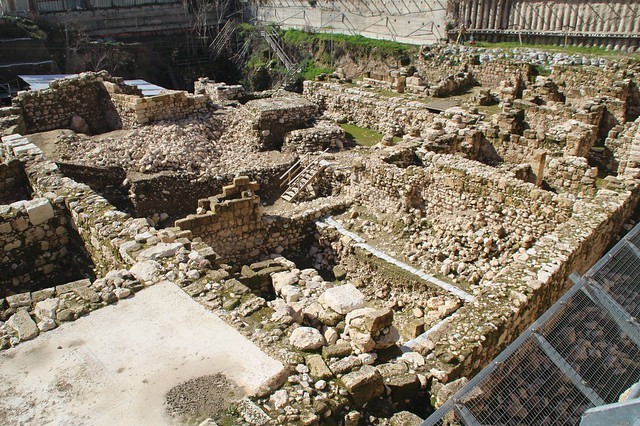
History of the Hebrew Language
Hebrew is a Semitic language of Canaanite subgroup whose first use was recorded at about the 10th century BCE. It passed through four major historical periods:
· Classical or Biblical Hebrew: This period can be further sub-divided into:
[Interested in studying Biblical Hebrew? My article on this topic shows you how to do this online.]
I. Archaic Biblical Hebrew: This period was recorded in the Early Prophets in the Bible. The Song of the Sea in Exodus 15, the Song of Deborah in Judges 5 and several hymns from the book of Psalms highlight its peak use. It lasted until the 6th century BC. It has several names such as Old Hebrew, Paleo-Hebrew, and it represents the oldest form of the language.
II. Standard Biblical Hebrew: This period represents the bulk of the Old Testament as it contains sections from the books of Isaiah, Jeremiah, Hosea, Micah, and Amos. The Pentateuch also contains it in its prose sections. It lasted from the 8th to 6th century BC that was between the late Monarchic period and the exile.
III. Post- Classical Biblical Hebrew: This period lasted from the 5th century BC to the 3rd century BC and corresponded with the Persian period. It contains writings from the books of Chronicles, Esther, Daniel, Ezra, and Nehemiah. Foreign words were adopted as well as the Imperial Aramaic script. Dead Sea Scroll Hebrew followed this period, lasted a further two centuries.
· Mishnaic or Rabbinic Hebrew: It lasted from the 1st – 4th century AD. During this period, guttural consonants from the Biblical Hebrew were borrowed. In addition, it borrowed nouns from Aramaic and other words from Greek, Persian, and Latin languages. The temple in Jerusalem was destroyed and the reign of the Romans began. Mishnaic was hardly used as a spoken language.
· Medieval Hebrew: This period lasted from the 6th – 13th centuries BC. The language declined in relevance and it borrowed more words from Greek, Spanish, and Arabic. Tiberian Hebrew evolved and became the basis for vocalizing the Hebrew Bible.
· Modern Hebrew: Modern Hebrew was born after the Zionist Movement began and it is currently the official language of Israel. It contains many revisions intended to satisfy the needs of a modern speaker. It is presently the only conversational speech with basis on a written language. It contains characteristics of all previous forms of the language. It is written from right to left. It contains 22 letters.
[Read here my article on how to learn Modern Hebrew online.]
Historical Relationships between Aramaic and Hebrew
Having shared origins and had a prolonged contact throughout history, Aramaic and Hebrew have forged a strong relationship along the way. Aramaic is the most closely related Semitic language to Hebrew.
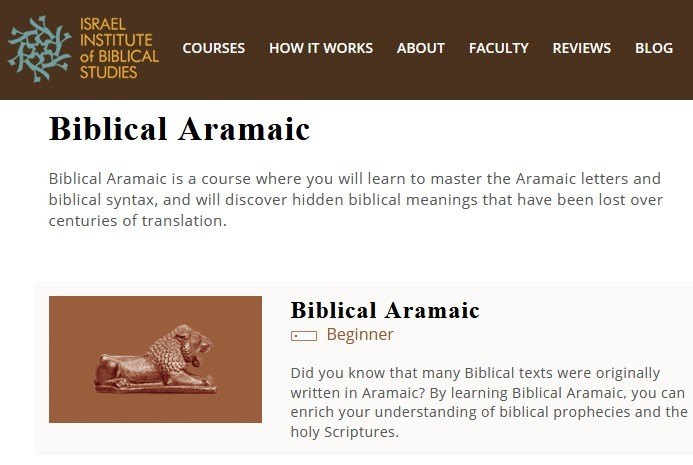
Ancient history of Israel sees Jacob called an Aramean in Deuteronomy 26: 5. In the books of Kings, the Israelites had an on and off relationship with the Arameans who later became known as Syrians. When the Babylonians carried the Jews into exile, they began to learn Aramaic because it was the language of the empire. This has reflected in the Hebrew language as large parts of Hebrew were borrowed from Aramaic.
Nehemiah 13:24 shows that both natives began to intermarry, which subsequently led to “Aramaization” of Hebrew. By 300 BC, Aramaic was already included in the Jewish literature. However, Hebrew retained its status as a religious language.
Aramaic is the main language of the Talmud and Zohar. It has been a major part of Jewish prayers for centuries. Aramaic Peshitta helped to understand the most complex passages, parables, and instructions in the New Testament.
While Hebrew words also entered Jewish Aramaic, it remained the main language in Israel for more than a thousand years until Arabic replaced it.
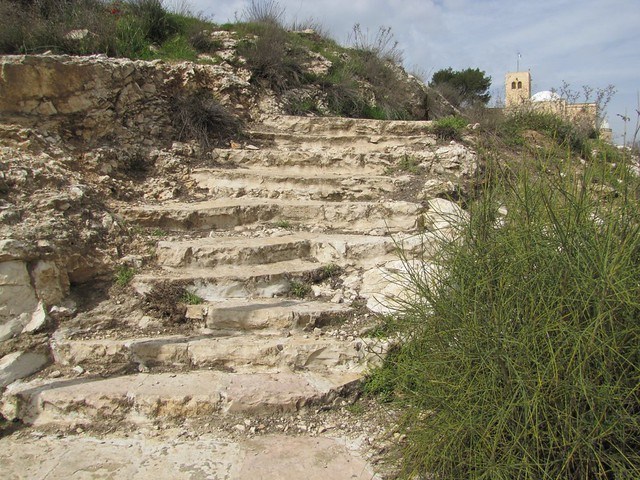
Linguistic Differences and Similarities Between Aramaic and Hebrew
Differences and similarities exist between these sister languages. While both native speakers of the languages may relate with some words, it would be challenging to communicate with one another.
Difference Between Aramaic and Hebrew
· The definite article is used in a different way. Hebrew places definite articles at the beginning of a word, while Aramaic places it at the end. For example, (“Hashem” [the name]) in Hebrew, as against (“Shem’ah”) in Aramaic. “Ah” is the definite article.
· Consonantal shift. For the words that both languages share, there is a change in the letters in cognate words. Cognate words are words shared by two languages with similarity in meaning, spelling, and pronunciation. For example, “tav” in Aramaic parallels with “shin” in Hebrew.
· There is no Canaanite vowel shift from ā to ō in Aramaic since it is not a Canaanite language like the Hebrew.
· The preposition, “dalet” serves as a conjunction in Aramaic and is regularly used in place of the construct to depict a possessive relationship. This is not found in Hebrew.
· Hebrew has undergone far more evolution than Aramaic, making it lose many features like pharyngeal, coda spirantization, etc. However, Aramaic still has its complete set of pharyngealized consonants.
Similarities Between Aramaic and Hebrew
· They are both Holy languages used in the Bible as well as spoken by Jews.
· They both belong to the Northwest Semitic sub-family of the Afro-Asiatic language family.
· They are both written in the Talmud as “Ktav Ashuri”.
· They are both written in the Aramaic square script.
· Both verb systems have a three-consonant root basis.
· Verbal conjugations play a similar role in both languages.
· They both have 22 letter alphabets.
· Their nouns share both construct and absolute states.
Many subtler differences and similarities may exist between these languages.
What Language Did Jesus Speak?
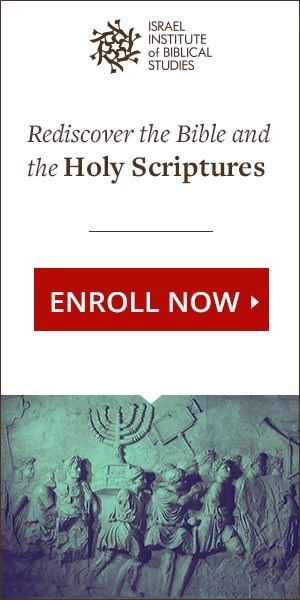 Jesus, along with his disciples primarily spoke the Aramaic Language (Jewish Palestinian Aramaic). In fact, Aramaic is best known as the language of Jesus because he used it throughout his public ministry. This is evident in Saints Matthew and Mark Gospels. However, this does not suggest that Jesus did not understand Hebrew, because in Luke 4: 16-19, Jesus is presented as reading the first two verses of Isaiah 61, which were Hebrew.
Jesus, along with his disciples primarily spoke the Aramaic Language (Jewish Palestinian Aramaic). In fact, Aramaic is best known as the language of Jesus because he used it throughout his public ministry. This is evident in Saints Matthew and Mark Gospels. However, this does not suggest that Jesus did not understand Hebrew, because in Luke 4: 16-19, Jesus is presented as reading the first two verses of Isaiah 61, which were Hebrew.
Jesus Christ spent much time in Nazareth and Capernaum in Galilee. These were Aramaic villages. Hebrew was the language used by Pharisees, Sadducees, and scribes. This means it was probably spoken in synagogues.
We must also note that Greek was the international language at that time. For example, his conversations with Pontius Pilate were in Greek.
[You can read here my article on online Biblical Greek Courses.]

Where Are Aramaic and Hebrew Spoken Today?
Aramaic in its several dialects is still spoken today. Many Syrian villages speak Western Neo-Aramaic. In addition, its Eastern and Mandaic forms are spoken in modern-day Iraq, Iran, Israel, Lebanon. A minor population of people who have migrated to Russia, Australia, and the United States also speak the language. As a whole, modern-day Aramaic has more than a million speakers.
Several churches have adopted Syriac, a form of Aramaic as their liturgical language. For example, Assyrian Church of the East, the Syriac Orthodox Church, The Chaldean Catholic Church, the Maronite Church, and many other Christian denominations in the East.
About nine million people speak Hebrew, five million of whom are Jews. Hebrew is the primary official language of Israel. It is also a recognized minority language in Poland. Jews in Argentina, Australia, Canada, Brazil, France, Panama, Germany, Gaza, the United Kingdom, the United States, etc. all speak Hebrew all over the world.
Famous Arameans and Hebrews in History
History is blessed with famous people from both Aramaic and Hebrew descent. A few examples are listed below:
· Ben- Hadad 1: Ben-Hadad 1 was king of Aram Damascus for 20 years, lasting from 885 BC to 865 BC. He was a contemporary of King Ahab of Israel. He is famous for helping Asa, King of Judah in attacking Northern Israel. Consequently, he gained control of the commercial route to southern Phoenicia at that time. This account is seen in 1 Kings 15: 20. Ben Hadad 2 succeeded him.
· Laban: Laban lived in Paddan Aram in Mesopotamia.This account is seen in the Book of Genesis in the Hebrew Bible. Laban was Rebekah’s brother. Rebekah later became Isaac’s wife. She gave birth to Laban. When he was grown, he married Leah and Rachel, who were Laban’s daughters. An account in Genesis 31:47 sees Laban name a pillar “Jegarsahadutha” in his Aramean language, while Jacob names it “Galeed” in Hebrew.
· Moses: The prophet Moses was a central figure in Jewish history. With his brother Aaron, he led the people of Israel out of slavery from Egypt across the Red Sea. They had to wander through the desert for 40 years before getting to the Promised Land. He wrote down the Ten Commandments on tablets when he was on Mount Sinai. As a major figure of the Prophets and Torah, Moses constantly communicated directly with God. He died very old, at the age of 120 on Mount Nebo. Moses is also an important figure in Islam.
· Eliezer Ben-Yehuda: Ben-Yehuda was a Hebrew Lexicographer and a newspaper editor who led the revival of Hebrew as the official language of the Jews during the Zionist Movement. He is often referred to as the father of Modern Hebrew. In 1861, three years after being born, Eliezer already began studying Hebrew until it became an obsession. He immigrated to Palestine in 1881 and became a teacher there. Subsequently, he championed the creation of a Committee of Hebrew language. By 1910, he had begun publication of the Modern Hebrew dictionary. He died in 1922 but his efforts remain cherished in history.
Connecting the Dots
Aramaic and Hebrew are two Semitic languages that governed ancient empires. Having the same roots, these languages have influenced each other. Hence, the importance of distinguishing them in every aspect. Their historical relationships had occasionally been a subject of dispute. However, this has become much clearer.
These languages have survived a dark period of oblivion and have persisted until the present day. As Holy languages of the Scriptures, Jesus spoke Aramaic but also understood Hebrew. Famous natives of both languages have influenced every human today in one way or the other. Learn more about Aramaic and Hebrew today.
Photos courtesy of Shalva Mamistvalov on Flickr
